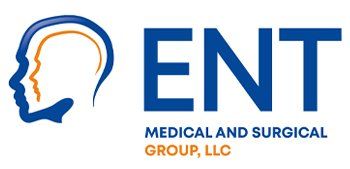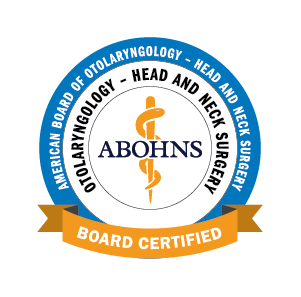Sinus Infections and Sinusitis
The most common causes of sinus inflammation (sinusitis) are irritants, allergens, and the common cold. Any one of these can attack our sinus membranes, causing them to swell and trap mucus in the sinus cavity. The resulting headache, pressure, and aching are telltale signs of a sinus infection.
Is It a Sinus Infection?
How do you know it’s a sinus infection and not just a runny nose? Sinusitis sufferers generally experience several of the following symptoms at once:
- Pain or tenderness in face
- Aching in upper teeth
- Difficulty breathing through nose
- Green or yellow nasal discharge
- Persistent cough
While most cases of sinusitis will resolve with rest and at-home treatment, you should make an appointment with one of our ear, nose, and throat doctors if you’ve been sick for three or more days, have a fever with your symptoms, or have a history of frequent sinus infections.
Sinusitis Treatment and Sinus Surgery
Antibiotic Sinusitis Treatments
If several days have passed and you’re still not improving, you may have a bacterial sinus infection. Call us to make an appointment with one of our ear, nose, and throat doctors. They’ll run you through a thorough exam and, if necessary, prescribe an antibiotic to treat your sinus infection.
Sinus Surgery
For patients who suffer from frequent sinus infections, sinus surgery widens the sinus openings and allows the removal of mucus or diseased tissue. The procedure can be performed endoscopically, that is, using a thin fiberoptic tube (an endoscope) inserted through the nostrils and real-time video imaging to guide the surgeon inside the nose and sinuses. This minimally invasive technique lets patients enjoy a shorter recovery time and less postoperative pain.
Functional Endoscopic Sinus Surgery
This sinus surgery standard threads an endoscope (tiny camera) into the sinuses to observe and remove impediments to airflow. Nasal polyps and other blockages are often removed using this procedure.
Adenoidectomy
This procedure surgically removes the adenoid—a tonsil-like tissue situated in the back of your nasal passage—to improve chronic sinusitis, earaches, and impaired breathing. Patients can expect to undergo general anesthesia before this sinusitis surgery, but recovery is quick.
Get In Touch
NEW HAVEN
46 Prince St, Ste 601
New Haven, CT 06519
203-752-1726
BRANFORD
954 Main St,
(11 Harrison Ave entrance)
Branford, CT 06405
Need Help?
Hi there! Have some questions about our company? Find the answers below.
-
How Do I Make An Appointment?
Please complete the Appointments Form or call the location number.
Reminder:
Before your first appointment, please ask your primary care physician to provide you with any pertinent information about your condition. This will include x-rays, CAT scans, lab tests, hearing evaluations, or any other information regarding treatments. Please bring this information with you at the time of your first visit.
We also ask that you contact our billing department at (phone) 203-234-2119 or (fax) 203-239-3047 prior to your first visit. A member of our staff will verify your insurance eligibility and help answer your questions.
-
How Long Does An Appointment Take?
The appointment length depends on the reason for your visit. We know your time is valuable, and we want to make your experience as good as possible.
-
What Insurances Do You Accept?
We accept most insurance. If your insurance plan requires a referral from your primary care physician, please have your doctor provide our office with this referral prior to your first visit. Unfortunately, these types of insurance plans will not pay for your care unless we have an active referral on file. You may wish to check with your insurance company prior to your visit to be sure that a referral has been issued.
-
How Do I Contact The Office During Off-Hours?
Please call our location office number. For emergencies, please dial 911.
-
What Is Your Policy For Missed Or Cancelled Appointments?
To better serve you and accommodate all patients, it is our policy to charge $50 for patients who do not show up for their appointment and charge $25 for patients who cancel in less than one business day.
Ready to Get the Care You Need?
ENT Medical and Surgical Group is committed to exceptional ear, nose & throat care and ensuring a great patient experience.
Get in touch with us and let us know how we can help!
Ear, Nose, & Throat Physicians in New Haven, North Haven, and Branford, CT. Call one of our offices today to schedule an appointment or to learn more about our medical and surgical services.
NEW HAVEN
46 Prince St, Ste 601
New Haven, CT 06519
203-752-1726
All Rights Reserved | Ear Nose & Throat Medical and Surgical Group, LLC.
Powered by:



